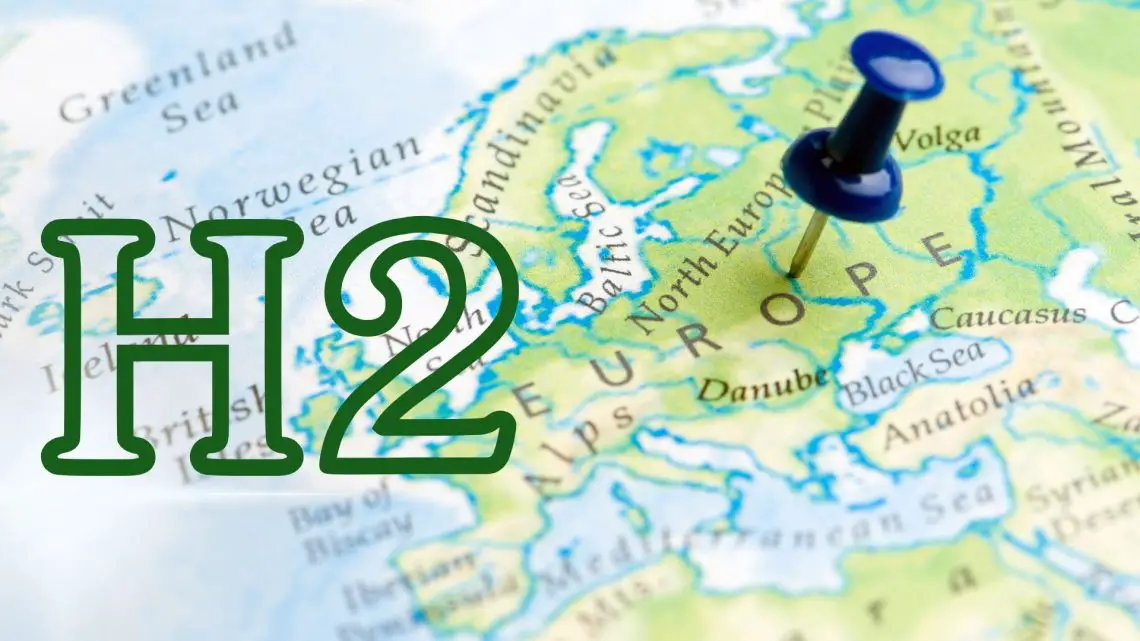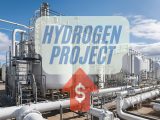
10-Year Deal to Shape Europe’s Hydrogen Economy—Inside the Major Partnership
January 7, 2025Hydrogen Transport Collaboration to Bridge Nordic Countries and NW Europe
Provaris Energy, in partnership with Uniper Global Commodities and Norwegian Hydrogen, has signed a key conditional term sheet to establish a green hydrogen supply chain from the Nordics to North-Western Europe. This agreement sets the stage for a binding sale and purchase agreement (SPA), with a target completion date of June 2025.
Under the collaboration, 42,500 tonnes of renewable, RFNBO-certified hydrogen will be delivered annually as compressed gas using Provaris’ H2Neo carriers. Uniper will act as the hydrogen buyer and manage the receiving terminal in NW Europe. The hydrogen deliveries are scheduled to begin in early 2029 under a 10-year agreement.
This development, part of an earlier Memorandum of Understanding (MoU) signed in 2024, underscores the partners’ commitment to leveraging hydrogen as a clean energy alternative. Progress on this project not only strengthens Provaris’ role within regional hydrogen supply initiatives but also solidifies the Nordics’ position as critical contributors to Europe’s hydrogen economy.
Pioneering Technology to Facilitate Hydrogen Delivery
Provaris’ proprietary H2Neo carriers and H2Leo barge storage solutions stand at the forefront of this hydrogen supply chain. The H2Neo vessels, designed for transporting compressed hydrogen, have a capacity of 450 tonnes at a pressure of 250 barg—ensuring cost efficiency and scalability. These carriers integrate seamlessly with H2Leo floating storage units, enabling flexible hydrogen loading, unloading, and storage at production sites.
Importantly, studies by Provaris have revealed that compressed hydrogen transport reduces delivery costs by 20% when compared to ammonia-based alternatives. The technology’s focus on compression simplifies logistics while maintaining high energy efficiency.
Efforts are also underway to align these storage and shipping innovations with the European Hydrogen Backbone, a proposed trans-European hydrogen infrastructure. This integration is expected to facilitate distribution to industrial hubs and accelerate Europe’s transition towards a low-carbon economy.
Recent Funding and Strategic Partnerships
To support its innovative technology pipeline, Provaris successfully raised A$1.5 million in November 2024 through a share placement. This funding will advance its hydrogen and CO₂ initiatives across Europe, including the development of hydrogen tank prototypes and enhancement of carbon capture solutions. Notably, the funding round attracted significant interest from Australian and international investors, demonstrating market confidence in Provaris’ technical expertise.
Beyond financing, Provaris has also entered strategic partnerships. A recent collaboration with Yinson Production aims to adapt Provaris’ tank designs for bulk-scale CO₂ storage and transportation, addressing critical limitations in the global carbon capture market. These efforts parallel the company’s ongoing hydrogen projects and highlight the versatility of its technology.
Earlier in 2024, the company partnered with Global Energy Storage to explore a hydrogen import terminal at the Port of Rotterdam. This project, capable of handling 40,000 tonnes of hydrogen annually, represents Provaris’ expanding footprint within Europe’s clean energy landscape.
Aligning with Europe’s Green Energy Goals
The Provaris-Uniper-Norwegian Hydrogen partnership aligns intimately with Europe’s push for renewable energy solutions. The EU Hydrogen Strategy and supporting initiatives, such as the European Hydrogen Bank, have allocated billions of euros to promote the adoption of green hydrogen technologies.
Hydrogen plays a critical role in decarbonizing difficult-to-electrify sectors such as heavy industry and long-range transport. By enabling bulk hydrogen trade between the Nordics and NW Europe, this supply chain directly addresses Europe’s growing demand for clean energy imports. The collaboration also furthers the EU’s 2050 net-zero targets by helping industrial sectors reduce greenhouse gas emissions.
Timeline and Future Potential
Commencement of hydrogen deliveries is projected for early 2029, with the partners targeting the operational readiness of their infrastructure by the late 2020s. Binding agreements, backed by technological validation and financial roadmaps, will lay the groundwork for long-term partnerships and supply reliability.
While several years remain until large-scale operations take off, this project and its underlying technologies already present immediate applications. For example, compression-based hydrogen transport could dramatically improve regional hydrogen distribution networks. Additionally, the tank technology being adapted for CO₂ storage holds promise in tackling global emissions through efficient carbon capture solutions.
Conclusion
The advancements spearheaded by Provaris, Uniper, and Norwegian Hydrogen showcase the possibilities for efficient, large-scale delivery of hydrogen, a vital component in global energy transitions. By demonstrating the cost-efficiency of compression and integrating hydrogen storage with marine transport, this collaboration offers tangible solutions for clean energy adoption.
While the large-scale deployment of these technologies lies years ahead, their principles can already inform smaller, regional applications. From decarbonizing industrial zones to supporting local hydrogen economies, these innovations contribute to a greener, more sustainable energy framework. By investing in such forward-looking technologies, the transition from reliance on traditional fossil fuels to renewable energy can be achieved more swiftly and effectively.



 With over 15 years of reporting hydrogen news, we are your premier source for the latest updates and insights in hydrogen and renewable energy.
With over 15 years of reporting hydrogen news, we are your premier source for the latest updates and insights in hydrogen and renewable energy.